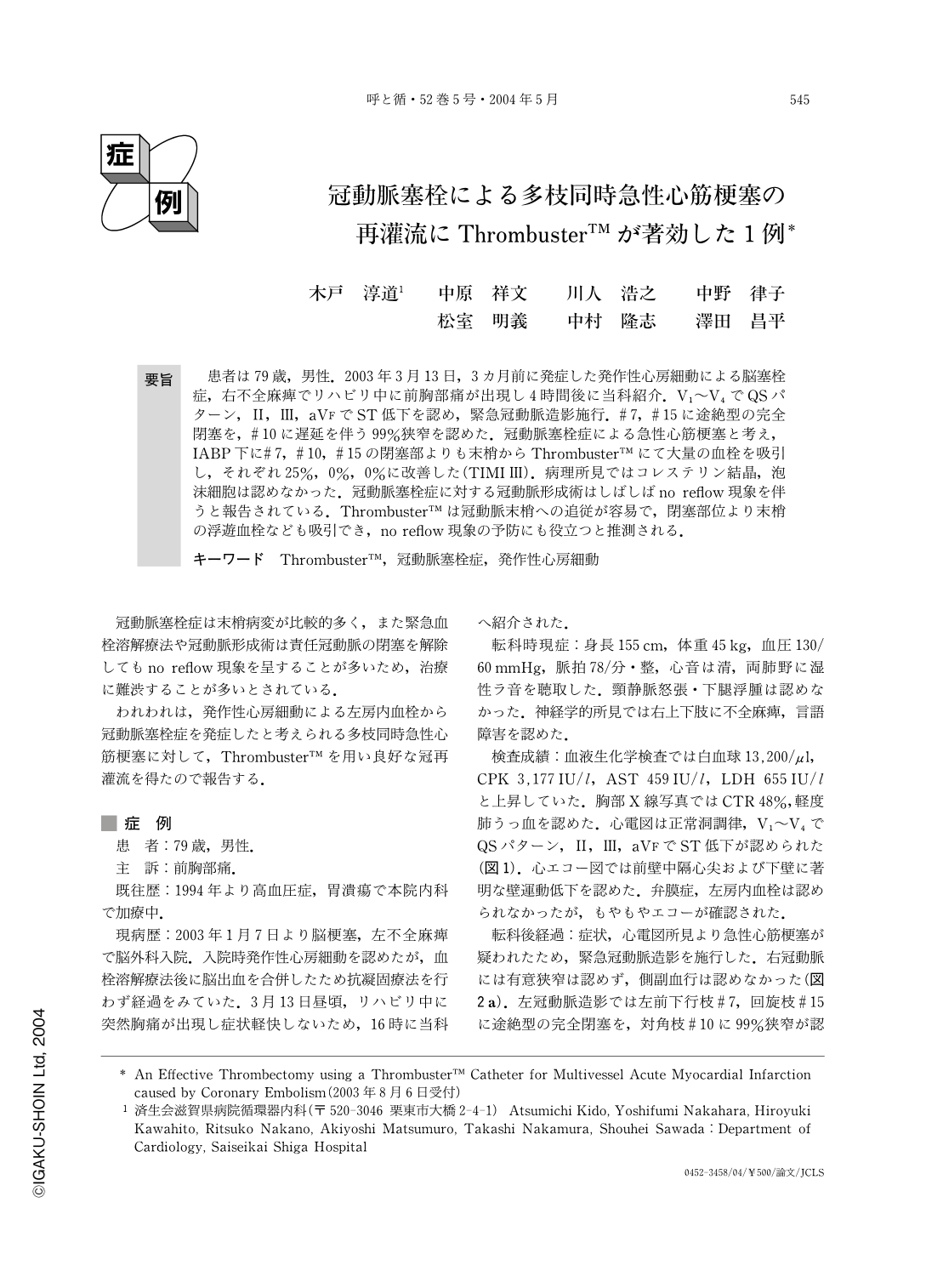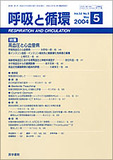Japanese
English
- 有料閲覧
- Abstract 文献概要
- 1ページ目 Look Inside
要旨
患者は79歳,男性.2003年3月13日,3カ月前に発症した発作性心房細動による脳塞栓症,右不全麻痺でリハビリ中に前胸部痛が出現し4時間後に当科紹介.V1~V4でQSパターン,Ⅱ,Ⅲ,aVFでST低下を認め,緊急冠動脈造影施行.#7,#15に途絶型の完全閉塞を,#10に遅延を伴う99%狭窄を認めた.冠動脈塞栓症による急性心筋梗塞と考え,IABP下に#7,#10,#15の閉塞部よりも末梢からThrombusterTMにて大量の血栓を吸引し,それぞれ25%,0%,0%に改善した(TIMIⅢ).病理所見ではコレステリン結晶,泡沫細胞は認めなかった.冠動脈塞栓症に対する冠動脈形成術はしばしばno reflow現象を伴うと報告されている.ThrombusterTMは冠動脈末梢への追従が容易で,閉塞部位より末梢の浮遊血栓なども吸引でき,no reflow現象の予防にも役立つと推測される.
Summary
A 79-year-old male, with a history of hemiparesis due to cerebral embolism associated with paroxysmal atrial fibrillation 3 months earlier, was referred to our Department for continuous precordial pain continuing for 4 hours during rehabilitation on March 13, 2003. An electrocardiogram showed QS pattern in leads V1-4and ST depression in II, III, aVF. Coronary angiography was immediately performed, which demonstrated total occlusion of segment 7 and segment 15 and 99% stenosis with delay in segment 10. Based on the angiographic findings, we attempted thrombectomy using a ThrombusterTM catheter under an intra-aortic balloon pumping operation. A large amount of red thrombus clots were aspirated from segments 7, 10 and 15, which improved coronary flow to TIMI-3 and resulted in 25%, 0% and 0%, respectively. The aspirated samples from the sites of the culprit lesions contained no cholesterol crystals or foam cells, which would have indicated atheromatous plaque rupture. Percutaneous transluminal coronary angioplasty for coronary embolism often results in a no-reflow phenomenon. It has been considered that thrombectomy using a ThrombusterTM catheter should be performed in cases of coronary embolism, because this new strategy can easily reach the distalportionofthecoronaryartery, preventingtheno-reflow phenomenon by aspirating extensive thrombi and stagnated flow.

Copyright © 2004, Igaku-Shoin Ltd. All rights reserved.


